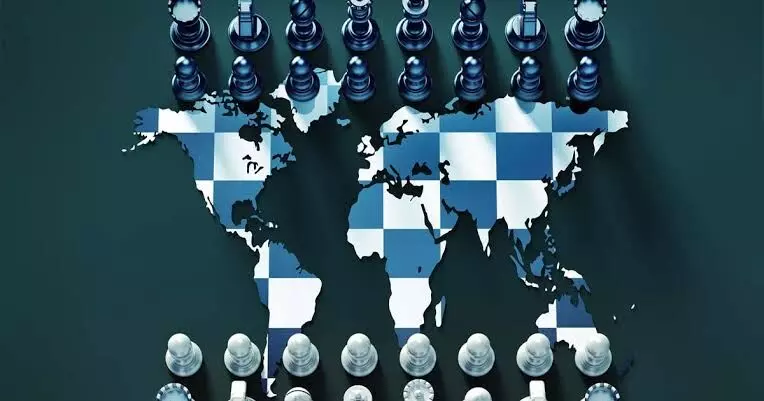TRENDING TAGS :
Where India stands amid geo-political turmoil?
The year 2022 started with the hope of a strong global economic recovery from the stings of Covid. But soon the globalised world witnessed the Russia-Ukraine war, supply chain disruptions and spillover from weaknesses in major economies like the United States, the European region and China. As a consequence, 2022 ended with alarming global inflation starring at its 15-year high, the US dollar is the strongest in 20 years, the Federal bank's most aggressive increase in policy rates in 22 years and China's growth is at 45 years low. World Bank, IMF and Nomura have already predicted a perilous recession in dozens of major economies in 2023.
Meanwhile, World Bank's recent Global Economic Prospects report states that India is expected to be the highest-growing major economy in the world. The World Economic Forum and Morgan Stanley have also found India as the bright spot on the dimming world map. Therefore, it is crucial to understand why the Indian economy is expected to outperform even in these global turmoil situations. India's resilient outlook can be broadly attributed to 3D's- Demography, decarbonization and diplomacy.
Demography
The rapidly ageing population is a major concern for the world. Contrarian, India has a pool of young people which opens doors to wide-ranging opportunities. The government is taking significant steps to reap the benefit of demographic dividend by indulging the population in various economic activities through the Atmanirbhar Bharat initiative, National Infrastructure Pipeline, intensive PLI, liberal FDI norms, revamped investors summit, logistic policy etc. Recently, the government has also announced a series of reforms in labour laws, RERA, GST, corporate rate cuts, cleaning banks' balance sheets, financial inclusion etc.
With the majority population in the golden age bracket, India can accelerate its economic growth trajectory manifolds. Japan and South Korea are evident examples. As per CII Report, India has the potential to achieve USD 9 trillion GDP by 2030 and USD 40 trillion GDP by 2047 from the current USD ~3.5 trillion. Nevertheless, the basic underlying assumption behind this assessment is the effective utilization of the demography. There is a need to enhance the employability level of the population so that they can contribute to their maximum, otherwise demographic dividend may also turn out to be a demographic disaster.
Decarbonization
India's energy consumption and energy sources have witnessed unprecedented changes due to significant government policy initiatives such as 100% electrification across all villages, access to clean cooking gas, National Hydrogen Mission and PLI to green energy producers etc. According to Morgan Stanley Report, India's per capita consumption is 900 Watts per day and is expected to increase by 60 percent to 1440 watts in this decade, mostly from renewable energy. It is worth noting that energy access is closely linked to the economic prosperity of the country.
The report further focuses that India's energy transition helps not only in lowering emissions but also to improve the current account balance, as it will help in lowering import dependence across oil (80%), gas (55%), coal (25%) and green transition components (95% solar modules). Energy transition investments will positively impact India's terms of trade and reduce headline inflation volatility as the imported energy share of GDP declines by nearly 150bps from 2022 to 2032. It also improves living conditions, as 14 of the 20 most polluted cities in the world are in India.
Diplomacy
India's diplomatic attitude has seen a remarkable change. Now, foreign affairs are not only concerned with the outside world but have significant bearings on the internal aspirations of the countrymen.
New India's diplomatic response to strategic geo-political issues was prompt, clear, responsible and assertive. It effectively managed its global ties with different stakeholders. India engages with the US through QUAD, I2U2 and Indo-Pacific Economic Framework, secures beneficial trade deals with Russia on oil and weapons, provided humanitarian aid to Ukraine, interacts with China through BRICS, challenged Eurocentric hegemony, broadens cordial relations with Africans through vaccine Maitri and connects well with the diaspora. India's G-20 leadership is expected to pave new paths for the emergence of India as the leader of the global south and a strong candidate for the third pole in the world.
Despite multiple geopolitical uncertainties and turbulences, the Indian economy appears relatively resilient. However, India's manufacturing sector, unemployment, income inequality, FII flows, exchange rate dynamics and fiscal prudence are still a matter of concern for the economy. There is a need for a calibrated policy framework to counter the challenges and fully capitalize on the wide-hanging opportunities to emerge as a trustworthy and responsible economic power.



